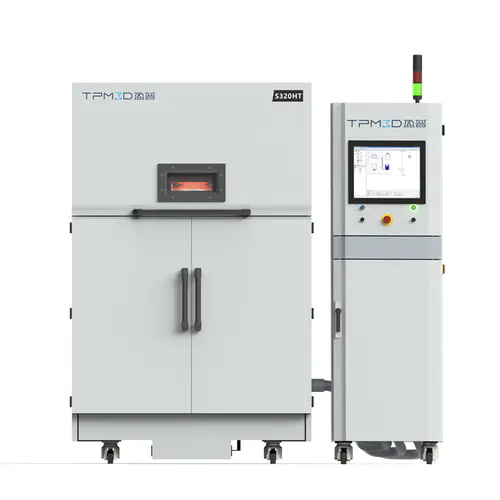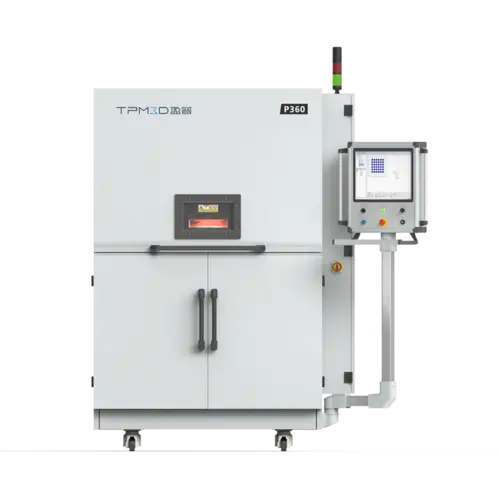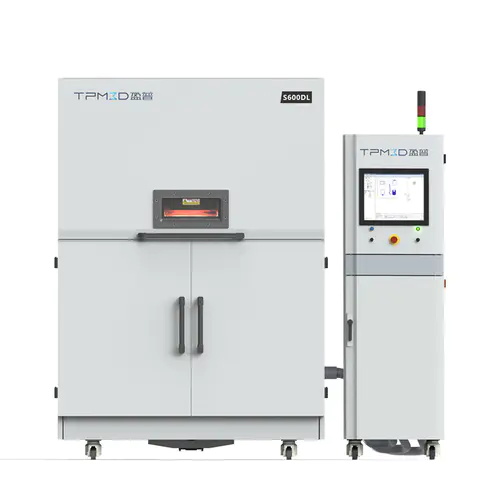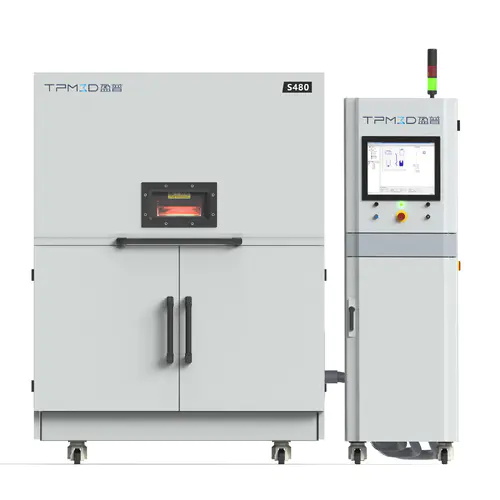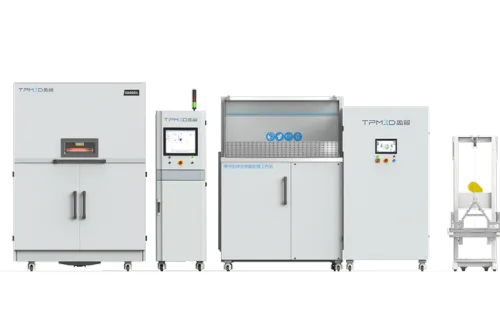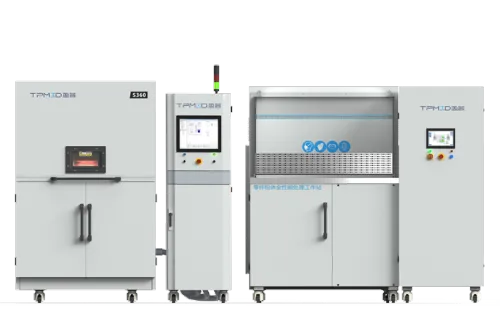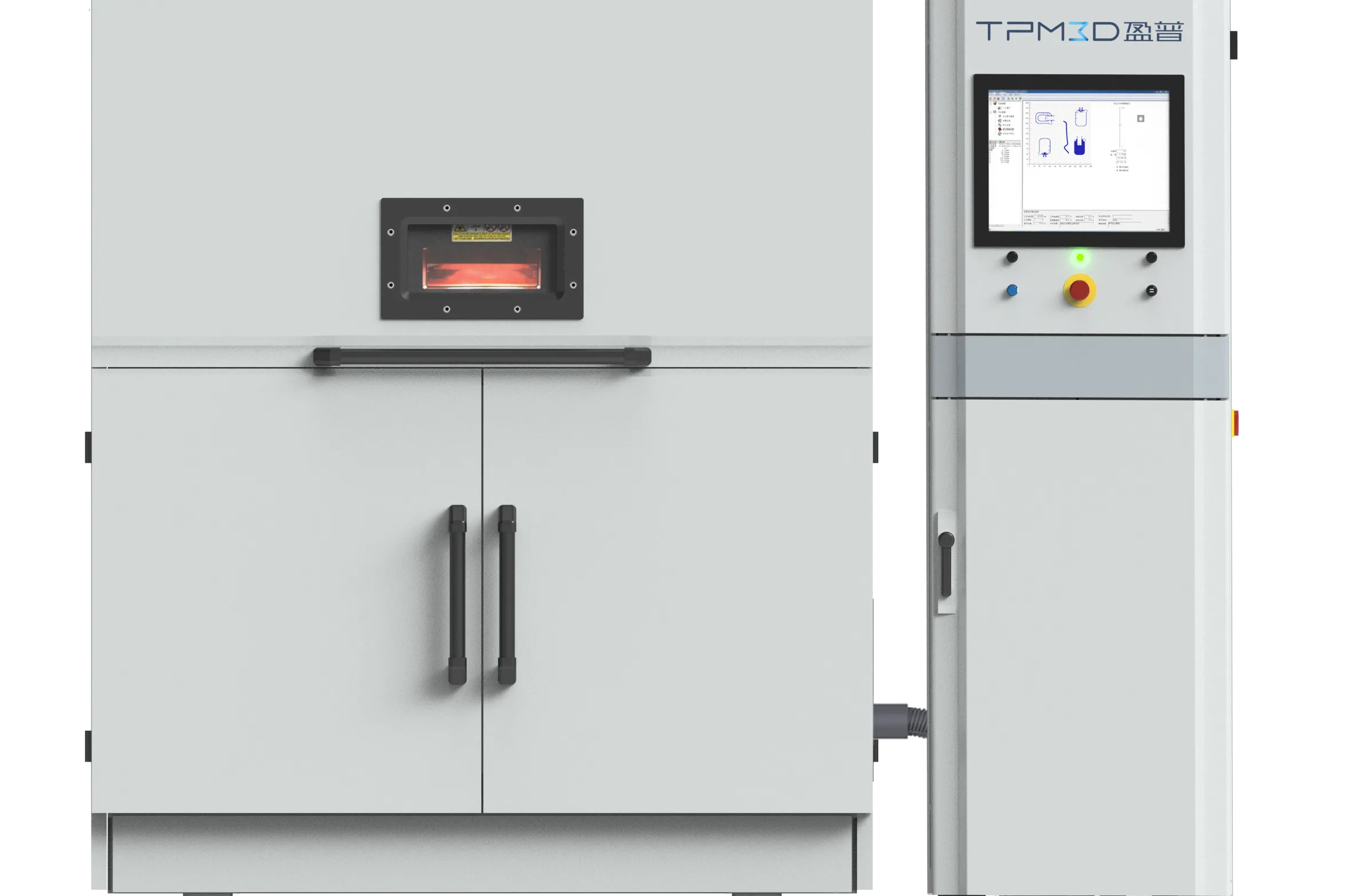
Features
Why Choose TPM 3D printing?
TPM 3D Asia Advanced Materials Printing Center
TPM 3D Asia advanced materials printing center located in Jiangsu Province, cover the area with more than 1000 m2. The center consists of intelligent manufacturing 3D printing display platform, industrial and advanced materials intelligent printing center, medical sterile R&D experiment labs, and SLS post processing center and multimedia conference zone.
3D Printing Digital Medical Center
The center construction includes three phases, we can provide orthopedic insoles, orthopedic pillows, scoliosis braces, knee orthoses, application of surgical guides for head, pelvis, spine and knee joints and 3D printing of braces, as well as orthopaedic standardized implant products development.
Our research
TPM3D has successfully developed 10+ laser sintering additive manufacturing systems, and more than 10 kinds of polymer powder printing material for high-quality parts manufacturing, has more than 30 national patents as well.
3D Printing
TPM3D technical team has been engaged in industrial 3D printing business since 1999 and has become the industry brand with 20 years focusing on 3D printing service。
TPM3D has various customers at home and abroad from the fields of automobile, electrical appliances, electronics, medicals, cultural & creative, education, aerospace, such as Guangzhou Automobile, Dongfeng Motor, Gree Group, LG Electronics, TTI, Fohan Service Bureau, Tongji University, Southern University of Science and Technology, University of Texas at Austin, and Massey University Auckland.
3D Printing Applications
3D printing or additive manufacturing has been used in manufacturing, medical, industry and sociocultural sectors (eg. Cultural Heritage) to create successful commercial technology.More recently, 3D printing has also been used in the humanitarian and development sector to produce a range of medical items, prosthetics, spares and repairs.
Featured Products
Collection about TPM 3D printing
User Reviews
What users say about TPM 3D printing
Frequently Asked Question
Do you have any question?
Materials such as wood, cloth, paper, and rock cannot be 3D printing because they burn before being melted and extruded through a nozzle.
3D printing is an additive manufacturing process that creates physical objects through digital design. The process works by laying down thin layers of material in the form of liquid or powdered plastic, metal or cement, and then fusing the layers together.
Among the raw materials for 3D printing, plastic is the most common. Plastic is one of the most diverse materials for 3D printed toys and household fixtures.
TPM3D has the ability of independent research and development. The research and development team accounts for more than 40% of all employees. The core research and development personnel are the backbone of China's earliest three-dimensional printing, and have rich experience. The products developed and produced have won more than 40 national patents;TPM3D SLS 3D printing equipment has a complete range of models, and the size of the forming cylinder ranges from 260mm*260mm to 600mm*600mm, covering single laser, dual laser, and high temperature printers, which can meet the needs of users in different fields.
TPM3D is a professional R&D and manufacturer of SLS 3D printing systems, which can customize SLS printing equipment and provide efficient and fast 3D printing services.
TPM3D mainly develops and manufactures SLS 3D printing system, our printing equipment can support more than 20 kinds of printing materials, including PA12, PA11, PA6X, TPU, PP, PEEK, etc.
Among the SLS printing equipment currently launched by TPM3D, the S600DL dual-laser SLS 3D printing system is the equipment with the largest forming size among the current similar printing equipment, and the size of the forming cylinder reaches 600mm*600mm*800MM.
Among TPM3D's market-oriented printing equipment, S320HT is an SLS 3D printing equipment for high-temperature molding materials.
Our updates and blog posts
3D printer product prototype design verification advantages
Validation advantages in 3D printer product prototyping 5. Speed up the design process. Speed up testing progress. 3D printing is an economical option. Diversity of 3D printing technologies. High degree of design freedom
Key elements for 3D printing technology to go carbon neutral
The key elements for 3D printing technology to become carbon neutral are, materials, manufacturing, transportation, use, and recycling
Understanding of Design for Additive Manufacturing (3D Printing)
The benefits of design for additive manufacturing lie in design freedom, adaptability and flexibility, streamlining the entire supply chain, adding value, saving time and money.

